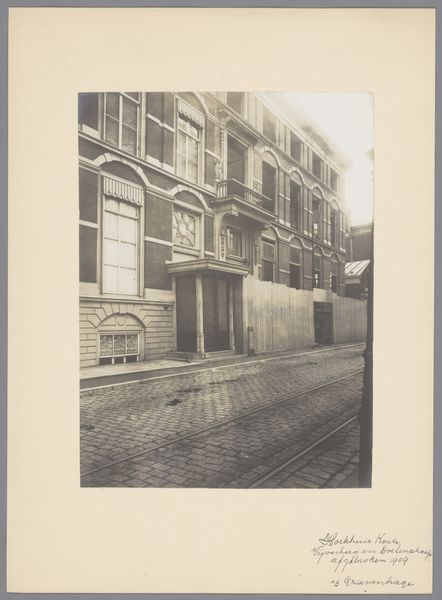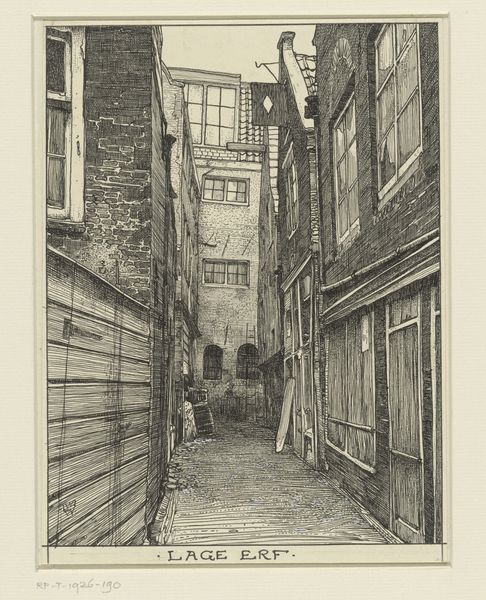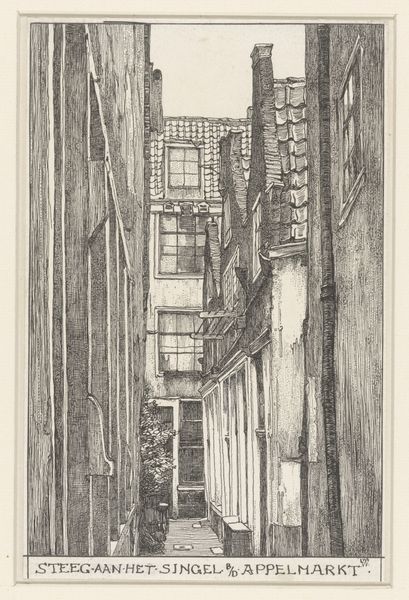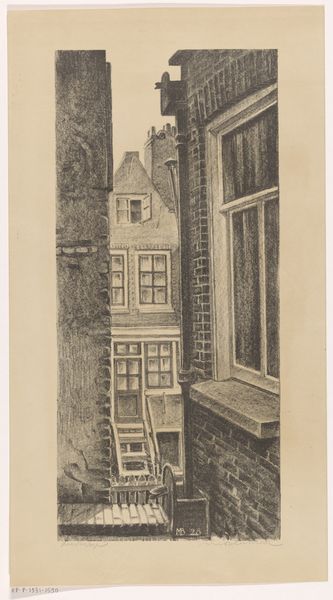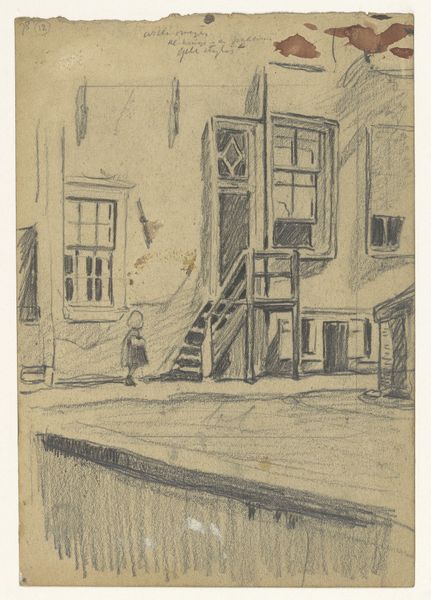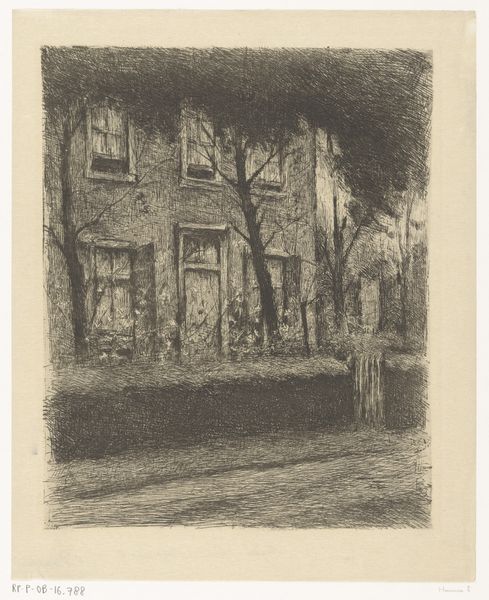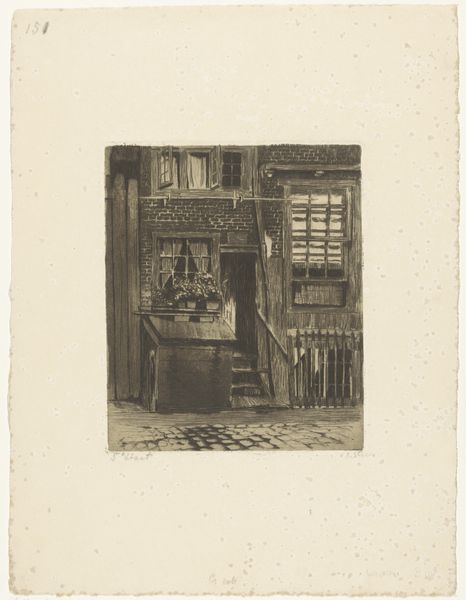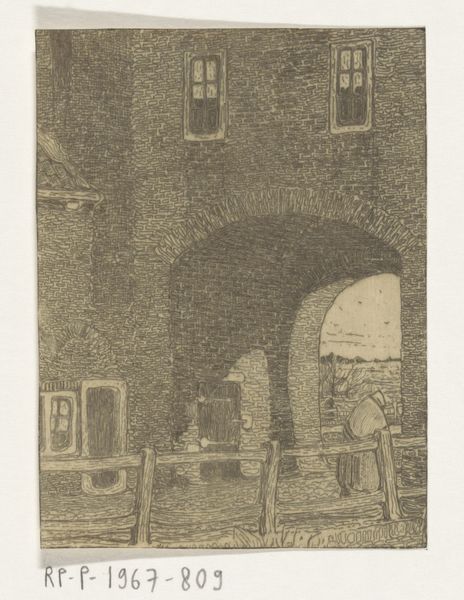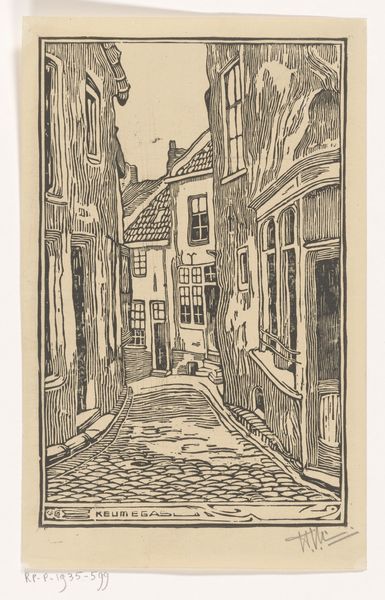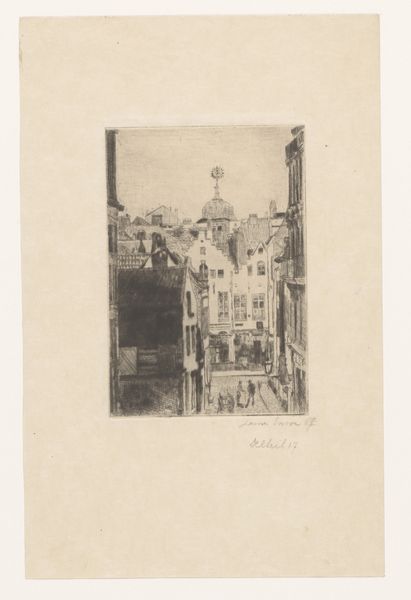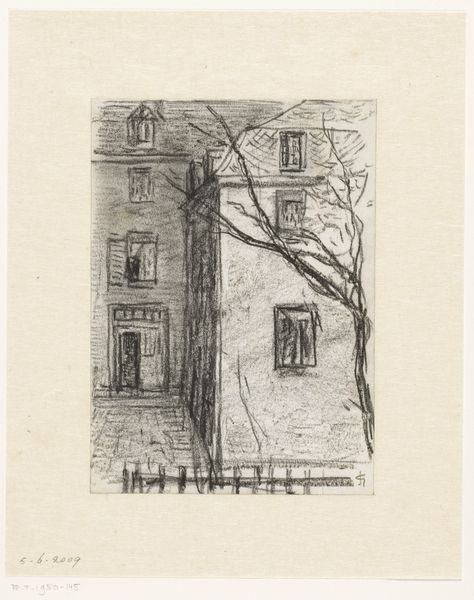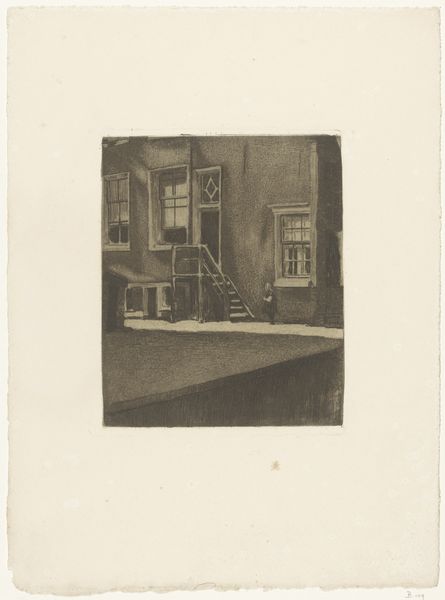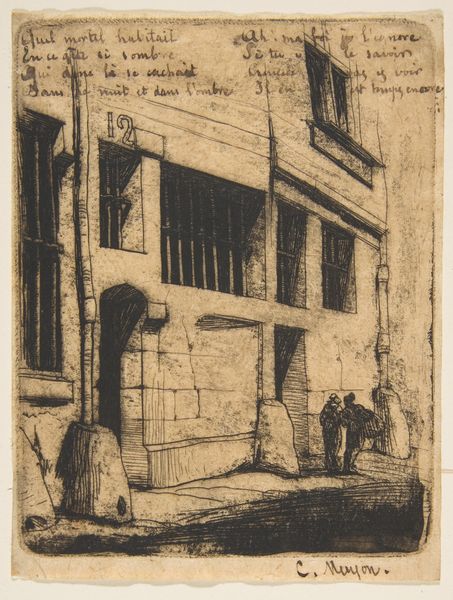
print, etching
# print
#
etching
#
etching
#
cityscape
#
realism
Dimensions: height 385 mm, width 300 mm
Copyright: Rijks Museum: Open Domain
Editor: So, this is "Houses with Raised Sidewalks and Iron Railings" by Gerrit Haverkamp, an etching from 1898. I’m really drawn to the texture, all the hatching makes the stone and wood feel so tactile. What do you see in this piece? Curator: The dense network of lines immediately tells me a story about labor. Look at the sheer time invested in rendering each brick, each cobblestone. This isn't just about depicting a cityscape; it’s about revealing the intensive process behind printmaking and how it mirrors the work of building the city itself. Consider how etching, as a technique, democratized image production compared to painting, making it more accessible for consumption. Editor: That’s fascinating. So you’re saying the medium itself reflects the values of the era? The print suggests accessibility, a "commonness?" Curator: Precisely! And think about what Haverkamp chooses to depict. Not grand monuments, but everyday dwellings with their raised sidewalks, indicating perhaps a concern for sanitation or protection from floods. What materials are these buildings constructed of? What do the iron railings tell us about emerging technologies and the social class of the inhabitants? Editor: Wood, brick, iron... accessible, readily available materials. Not exactly luxurious, but solid, functional. It speaks of a pragmatic society, maybe even a budding middle class? Curator: Indeed! And where would these materials originate from? Who labored to produce and transport them? The print invites us to consider the wider web of production and consumption that sustained urban life in the late 19th century. The cityscape is more than just the aesthetics of urban development. It’s a product of intense labour and material exploitation. What's more, the labor necessary to _create_ this artwork, etching, mirroring these forms of societal work as well. Editor: Wow, I hadn't considered it that way. So, understanding the materials and the process is key to unlocking the cultural significance. I’ll never look at an etching the same way again. Thanks! Curator: The pleasure's mine. Reflecting on art in this manner unveils it, not merely as a static image but as an imprint of societal labour and value.
Comments
No comments
Be the first to comment and join the conversation on the ultimate creative platform.
